Oscillator Tutorial
Contributed By DigiKey
2017-11-09
An oscillator is a device that produces an AC signal across its output terminals. The term “Oscillation” can be defined as “movement back and forth at a regular speed”. An oscillator produces a signal that does this by converting a DC voltage on its input to a repetitive AC voltage across its output terminals. An oscillator will include an amplifier and a filter/coupling network that operates using a positive feedback loop. Most often these will come in a hermetically sealed package. This can be useful for many applications such as controlling the speed of a digital processor, generating a clock signal, creating a carrier wave generator or receiver, or several other applications. There are several different kinds of oscillators on the market today including crystal oscillators, MEMS, voltage controlled crystal oscillators, temperature compensated crystal oscillators, and many more. This article will cover some of the main kinds of oscillators, some of the typical vernacular used in the industry, and how to find these on the DigiKey website.
Some of the key parameters of an oscillator are the operating frequency, the supply voltage, the output signal, and the frequency stability. There are more considerations but those are some of the larger ones. These are all searchable parameters on the DigiKey website which can be found going to the “Oscillators” page. If the desired frequency is known, it is possible to filter out all other options that are not applicable. This is done by going to the “Frequency” tab and highlighting the desired frequency and then hitting the “Apply Filters” button. An example can be viewed in Figure 1 where a 32.768 kHz oscillator is desired. In Figure 1 the frequency is on the right and the apply filters button is on the bottom left.
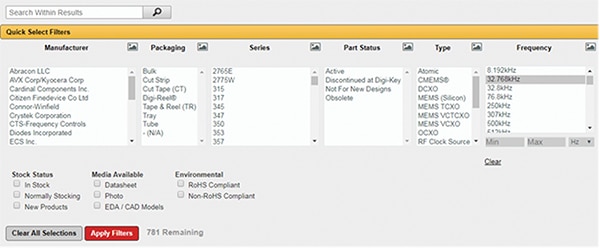
Figure 1: Selecting a 32.768 kHz oscillator in the DigiKey parametric search engine (screenshot shows valid information as of the posting date of this article).
Crystal oscillator (XO)
There are several different kinds of oscillators. One of the most popular is the Crystal Oscillator (XO). Quartz crystals are one of the most popular ways to generate a clock signal. This is where the name “Crystal Oscillator” came from. A crystal oscillator is not just a piece of crystal, but also a circuit designed to produce a certain kind of signal suitable for a particular load. The crystal is the element that determines the frequency and the frequency will be fixed. In addition to the frequency, the type of output is important to keep in mind. If a device needs a clock with a TTL signal, then an oscillator with a TTL output should be chosen. An example of such an oscillator is the ASE-48.000MHZ-LC-T from Abracon LLC.
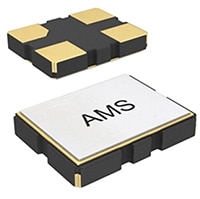
Figure 2: Abracon’s ASE-48.000MHZ-LC-T 48 MHz crystal oscillator.
There is a section titled “Associated Product” at the bottom of the product page for the ASE-48.000MHZ-LC-T which has accessories listed for testing the oscillator. DigiKey will typically have accessories listed at the bottom of a product page to help customers easily find associated products if there are any as shown in Figure 3. By simply clicking on the AXS-3225-04-10 hyperlink the accessories product page will be brought up.

Figure 3: Associated product for the ASE-48.0000MHZ-LC-T from Abracon (screenshot shows valid information as of the posting date of this article).
Oscillators often come in a series which is a proprietary family that all follows a similar part numbering scheme. The ASE-48.000MHZ-LC-T falls into such a part numbering scheme. The numbering scheme will typically involve a prefix that designates which series the oscillator belongs to. After that there will usually be a frequency callout which is typically called out in MHz. Operating temperature will usually be an option. The two most common temperature ranges are -20˚C ~ 70˚C and -40˚C ~ 85˚C. Frequency stability will generally be called out here. According to a glossary of terms provided by Abracon, frequency stability is the “maximum allowable frequency deviation compared to the measured frequency at 25˚C” over the operating temperature range. The ASE series only has CMOS outputs, so this was not called out on the documentation. Oscillators are designed to drive a particular load. The crystal and oscillation circuit can provide a signal with a logic level output. There are several different types of outputs which will be designed to meet the logic needs of what it is driving such as TTL, CMOS, HCMOS, and clipped sinewave to name a few. It is prudent to check the documentation for the device that needs the clock output of the oscillator. This will tell the user which kind of logic output is needed from the oscillator. Figure 4 shows the part numbering scheme for the ASE series.
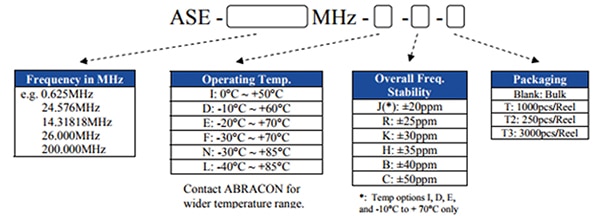
Figure 4: Abracon’s ASE series part numbering scheme (Image source: Abracon).
Often a number can be configured using a part number builder similar to the one in Figure 3 but there will be no stock on that number anywhere. This is because of the massive amount of options there are. While a manufacturer has the capacity to build all of the different potential numbers, often a customer has never needed some of the possible combinations. If a part number is desired and fits the numbering scheme but is not currently carried by DigiKey, it is still possible to order it. This is called a non-catalog request. DigiKey takes that part number and reaches out to the manufacturer for pricing and availability. Since these are not commonly stocking items at DigiKey, minimum ordering quantities will apply. To make a non-catalog request, simply call 1-800-344-4539 and ask to speak with an applications engineer.
MEMS oscillator
MEMS-based oscillators produce the same result as a crystal oscillator but do so differently. MEMS stands for “Microelectromechanical systems”. This uses etched silicon in a die which acts like a tuning fork that has a resonant frequency. A crystal oscillator will involve two technologies in the manufacturing process. The quartz chip needs to be manufactured which is difficult and expensive to do. This needs to be combined with an oscillation circuit causing an extra step in the manufacturing process. This leads to a higher cost and longer lead times. MEMS oscillators will just use the silicon technology which is highly automated and less expensive to manufacture than the quartz crystal. This leads to a lower cost for a finished product. MEMS oscillators typically consume less current than a crystal oscillator making them great choices for battery powered applications. They also tolerate severe vibration and shock better than crystal oscillators. An example of a MEMS oscillator is the SIT8808BI-73-18S-25.000000G from SiTIME.
If a customer was on the DigiKey website looking at the SIT8808BI-73-18S-25.000000G, it would be possible to find similar products very quickly. A trick to making this easier is by going to the “Product Attributes” section of the product page. Perhaps a customer wanted a MEMS oscillator like the SIT8808BI-73-18S-25.000000G but with a different frequency. It is possible to do a parametric search right from the “Product Attributes” area by clicking the box off to the right for each attribute that is desired. If the customer needed a MEMS oscillator, wanted the standby option and the LVCMOS output with a 1.8 V supply and +/-50 ppm frequency stability they could click each respective box as shown in Figure 5 and then hit the search button at the bottom right. At the time this was written there were 264,150 options in the Oscillator page and this quickly took that number down to 47 options that were relevant.
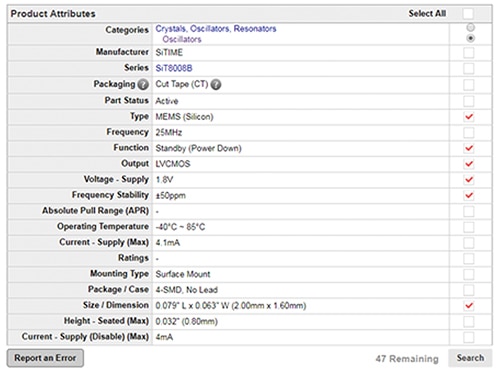
Figure 5: Looking for similar parts using product attributes selection in the DigiKey part detail page
Voltage controlled oscillator (VCXO)
As the name implies, a voltage controlled oscillator has the ability to change its frequency based on different input voltages. There will typically be a control pin that can have a varying voltage applied to change the output voltage. Manufacturers will typically specify what the “Control Voltage” is in the documentation; this is the voltage that controls the output frequency. The frequency is controlled by having a varactor diode in series with the crystal. The varactor diode will change its internal capacitance based on its input voltage. A varactor diode is a reverse biased diode that changes its capacitance based on how large the depletion region is. As more voltage is applied, the depletion region becomes larger which causes the capacitance value to go down. This ultimately gives the user the ability to control the frequency output of the oscillator. This can be very useful in things like a phase lock loop, or in a network that needs to compensate for temperature. By creating a feedback loop to the control pin it is possible to automatically control the frequency of a voltage controlled oscillator. Another thing to look for in the documentation is the “Absolute Pull Range”. That is the frequency range that can be controlled over all environmental and aging conditions. An example of a voltage controlled oscillator is the 357LB3I027M000 from CTS-Frequency Controls pictured in Figure 6.
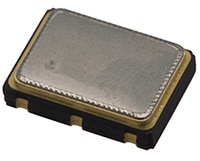
Figure 6: The 357LB3I02M000 voltage controlled oscillator from CTS-Frequency Controls.
Temperature compensated oscillator (TCXO)
Temperature compensated oscillators are made to compensate for temperature changes which ultimately change the output frequency. These are useful for applications that have dynamic environments. A cellular telephone is a good example of a device that is exposed to heat and cold over its lifetime. The microprocessor in a smartphone will be subjected to winter and summer weather but expected to operate the same in all conditions. A temperature compensated oscillator uses a compensation network to adjust for temperature variations. These are a bridge between a voltage controlled oscillator and an oven controlled oscillator (OCXO), which is more expensive and consumes more power than a typical temperature controlled oscillator. The temperature compensated network is typically made with thermistors and a varactor. The varactor varies its load across the crystal based on the output voltage of the compensation network. The operation is very similar to that of a voltage controlled oscillator but has the thermistors as well to help compensate for temperature. An example of a temperature compensated oscillator is the ECS-TXO-3225-147.4-TR from ECS Inc. International pictured in Figure 7.
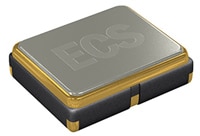
Figure 7: ECS Inc. International's ECS-TXO-3225-147.4-TR temperature compensated oscillator.
Conclusion
Much more can be said about oscillators than was mentioned in this article. The basic point here was to illustrate that there are different kinds of oscillators that serve different applications better. While they all work to achieve the same goal of providing a clock signal to a device, they do so in different ways. Many of the products DigiKey carries will have combinations of the different types of oscillators mentioned here. Hopefully this is a good start for the student who is just diving into the world of oscillators or the engineer who needs a starting place on the DigiKey website.

Disclaimer: The opinions, beliefs, and viewpoints expressed by the various authors and/or forum participants on this website do not necessarily reflect the opinions, beliefs, and viewpoints of DigiKey or official policies of DigiKey.








